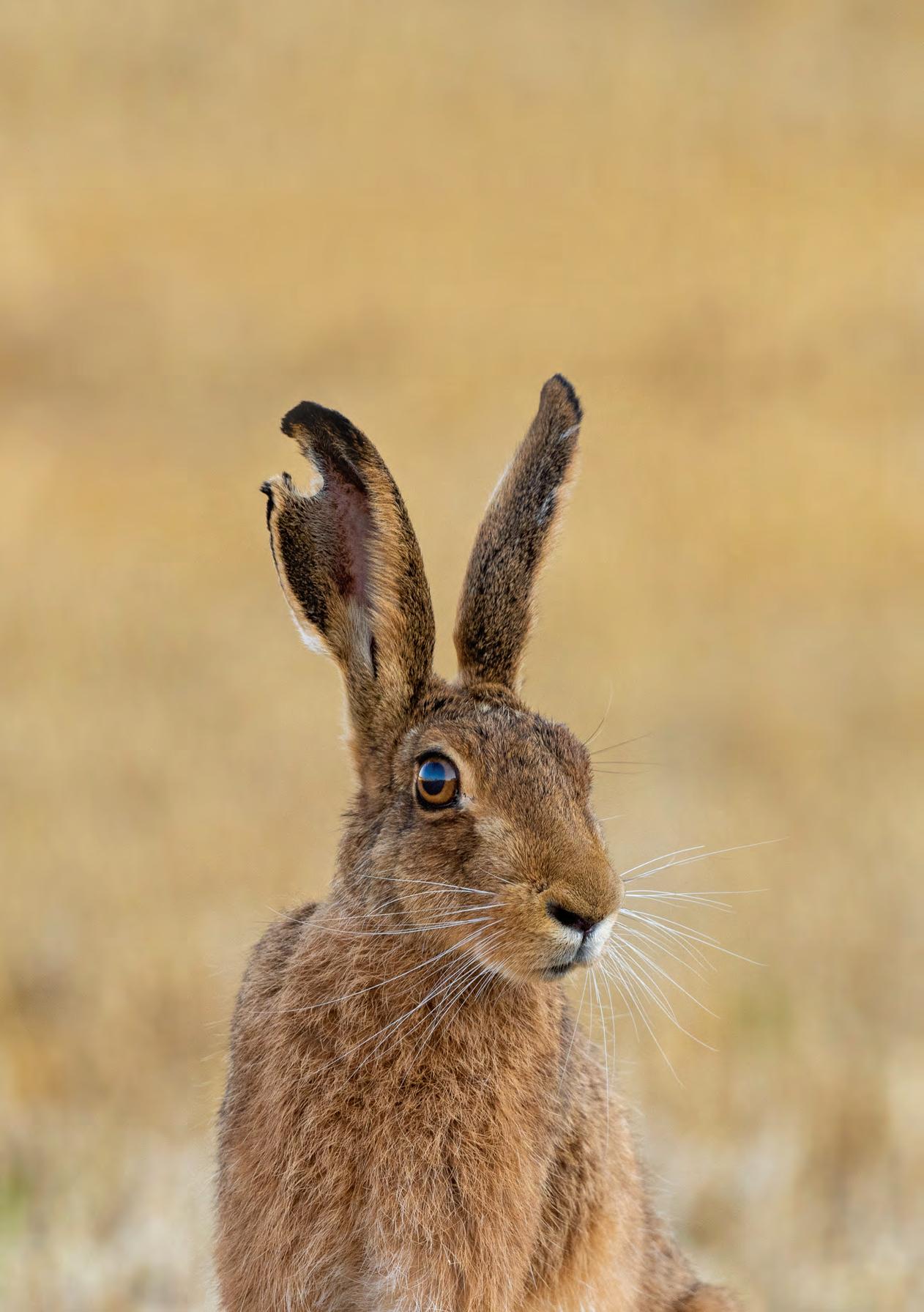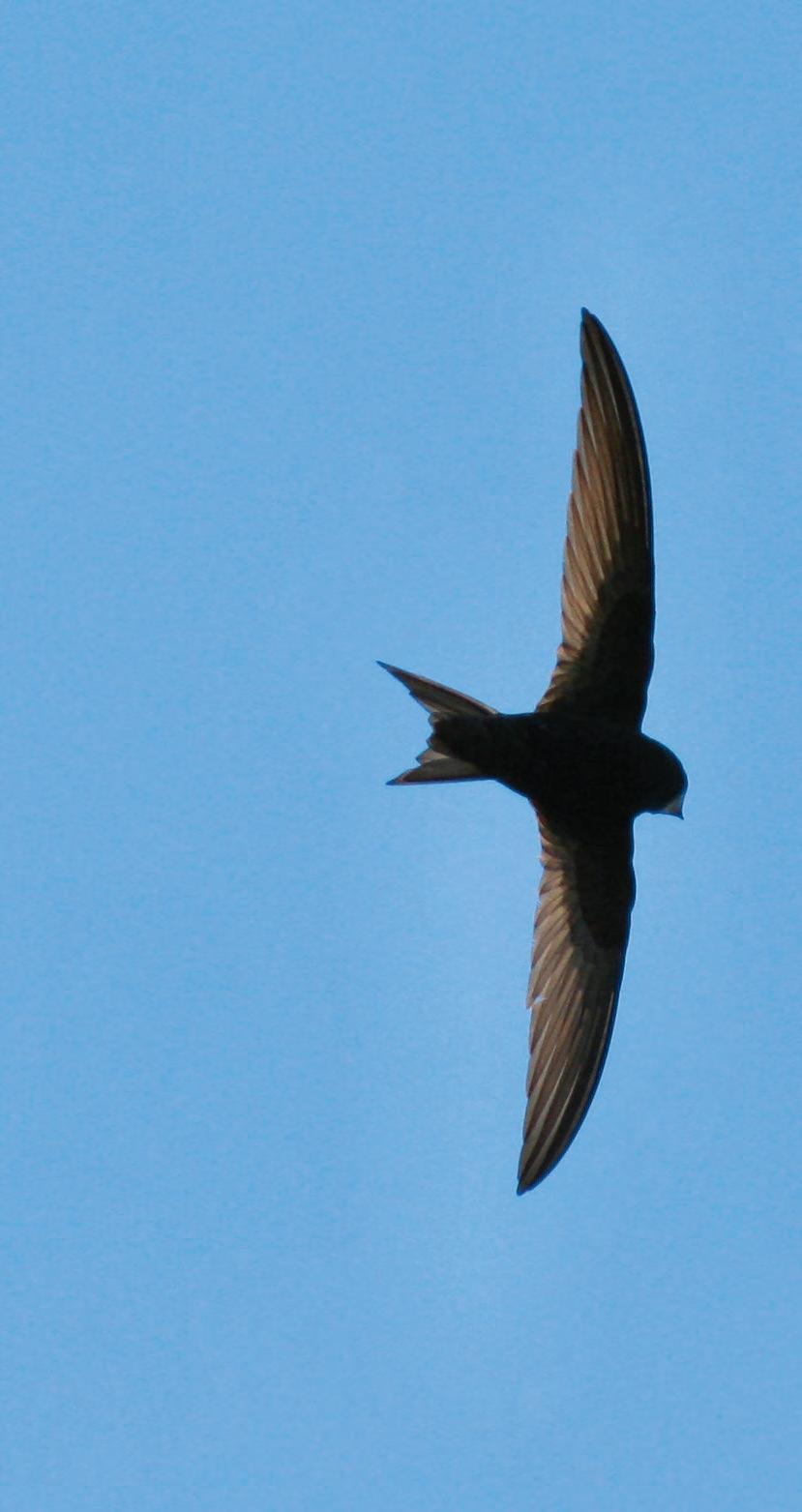ISSUE ONE… SUMMER 2016
LOcaL NEWS
HARE TODAy
I
picture by Sue Cross
t has to be one of the most iconic Suffolk sights to catch a hare or two tearing powerfully across a field. But the UK’s brown hare population has declined by 80% since the late 19th century, and their numbers continue to drop, warns the Hare Preservation Trust. Sue Alderman from the voluntary organisation tells Living In … the shooting of hares, even in their breeding season, leaves young hares, known as leverets, to starve and die in fields. “This is an unacceptable affront to modern animal welfare standards,” she says.
So are hare shoots causing the decline in their population? “By definition, shooting is designed to decrease the population, so yes, it is a significant factor,” says Sue. “Although hares face many challenges, including a recent large scale die-off from disease, East Anglia has a healthy, relatively stable population of them. But it is in decline. “An estimated 300,000 brown hares are shot in the UK per annum. many of these in East Anglia where the population is high and it can be asserted that they damage crops (even though hares are not classed as a significant crop pest). “The main figures are obtained from the National Gamebag Census (NGC) which is run by the Game & Wildlife Conservation Trust. It obviously only includes the numbers of hares shot on land where the landowners are willing to participate in the census, so there must be a number of culls undertaken which aren’t represented in the Gamebag census.” One Suffolk farming couple, who wish to remain anonymous, told Living In … the hare shoots they have witnessed were more of a “massacre” than a cull. “It was barbaric,” they stormed. Sue Alderman agrees: “I think it’s fair to say hare shoots are a messy affair. There have been photos and videos of hare shoots that would back this up, especially one infamous Suffolk cull a few years ago where witnesses saw many wounded hares being clumsily dispatched by people who weren’t good shots and who were clearly inexperienced, basically clubbing hares with the butt of their guns. It was shocking and clearly inappropriate;
I can’t honestly say what is ‘typical’ but the current situation evidently allows the opportunity for such incidents to occur.” Hare coursing is illegal but what is the actual law regarding the shooting of hares? And should it be changed? “There is a huge amount of emphasis on hare coursing – it suits landowners and legislators to draw focus to this wildlife crime and detract attention away from illegal hunting. There are over 70 registered UK harrier and beagle packs which traditionally hunted hares before the Hunting
Act 2004 and are still regularly witnessed causing hare deaths. Sue says hares have very little protection in law. “Legislation is archaic; they are classified as a game species under the Ground Game Act (1880), and the Hares Preservation Act (1892) prohibits the sale of hares and hare derivatives from March to July inclusive,” she explains. “The Hares Preservation Act is still current, and that means UK hares and hare meat cannot be sold from March to July, which is a travesty when most hare shoots take place in February, directly after the pheasant shooting season closes. So, UK hares shot in February are largely sold abroad where there is a greater appetite for it.” Local home owners… throw open their doors Child free zones?… meet the couple with the Parent Pod! Is grey just so last year?… Jojo Humes Brown on colours
YOUR BRAND NEW FREE HOMES & LIFESTYLE MAGAZINE
Sue says the Trust, which campaigns for the welfare and preservation of hares, would like to see a functional closed season for brown hares from february to September in line with Scottish law. “There is currently no closed season in England and Wales that provides adequate and enforceable protection during the breeding season – it is left to ‘voluntary restraint’ which we don’t feel is satisfactory when we know that most shoots are conducted in February when hares are known to be breeding. Landowners, gamekeepers and sporting organisations earn money running shoots for people, so hare shoots can be lucrative at a time when other game species are protected and unavailable. “To be clear on the law, there is a closed season for brown hares which applies only to ‘moorland and unenclosed land’; hares can be shot between 11th December and 31st March, but this doesn’t include arable land or ‘detached portions of land less than 25 acres which adjoin arable land’. So that’s complicated, but essentially in East Anglia, which is mostly arable, this closed season is completely non-functional.” Other UK and European countries which have introduced closed seasons for brown hare include Scotland, Northern Ireland, Belgium, France, Germany, Spain and Sweden. Sue adds: “Hare coursing is technically a form of poaching and is both a wildlife crime and rural crime priority.” l for more details, go to www.hare-preservationtrust.com ISSUE ONE… SUMMER 2016
5





